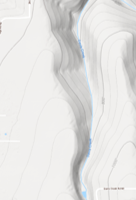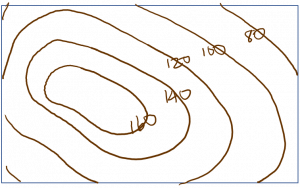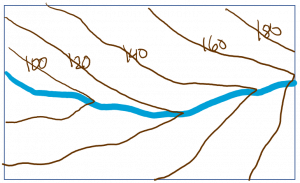13 Topographic Features
Elizabeth Johnson
Learning Objectives
Students will be able to:
- Identify topographic features including: cliffs, plateaus, plains, hills, ridges, depressions, and valleys.
- Determine which way is “downhill” on a slope or mountain, and determine which way a river flows.
Cliffs and Plateaus and Plains
Cliffs are steep slopes and have contour lines that are very closely spaced. Plateaus, or flat areas, have contour lines which are very far apart from each other.
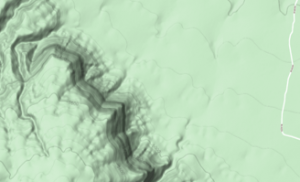
Hills
Hills and mountains have contour lines which form concentric curves. Round, smooth hills will have contour lines that look like a target from above. Craggy mountains will also have concentric contours, but these may be more irregular in shape.
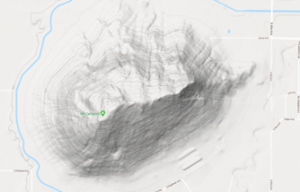
Ridges
Ridges have contour lines parallel to each other, on each side of the ridge.
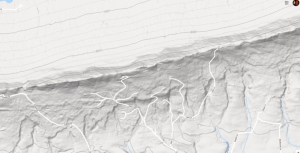
Depressions
Some places like sinkholes and volcanic calderas, are indented holes in the Earth’s surface. These are indicated by hatched topographic lines which also show the elevation decreasing towards the center of the depression.

Valleys
Valleys show “V” shape contours. The “V”s point upstream. In a river valley, the river will flow in the opposite direction from the direction the “V”s are pointing.
